Integrated Pest Management (IPM) is a holistic and science-based approach to effectively managing pests in greenhouse crops. It emphasizes using eco-friendly and sustainable practices to minimize pest-related damages while ensuring crop health. By combining various techniques such as biological control, cultural traditions, and monitoring, IPM strategies aim to reduce the need for chemical pesticides.
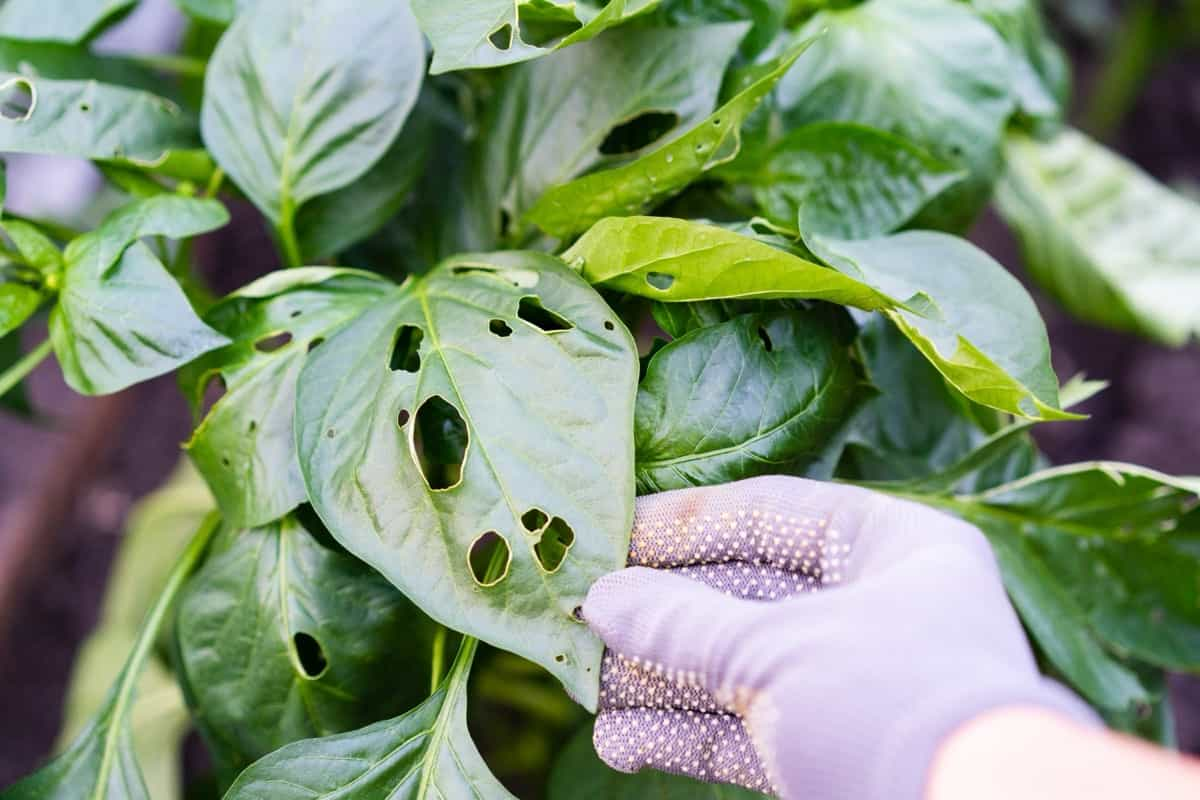
Integrated Pest Management for Greenhouse Crops
What is Integrated Pest Management for Greenhouse Crops?
Integrated Pest Management (IPM) is a method used to manage diseases, insects, and mites in greenhouses without relying on chemical pesticides. It reduces pesticide exposure costs and maintains pest-free plants. IPM is crucial due to stricter regulations, limited registered pesticides, and growing pest resistance.
It focuses on preventing pest outbreaks, maintaining healthy crops, preventing pests, closely monitoring plant health, acting promptly when detected, and documenting treatments. A successful IPM program includes maintaining a healthy crop, excluding pests, close monitoring, and establishing effective pest management treatments.
Integrated Pest Management (IPM) in Greenhouse Crops: A Practical Approach
Integrated Pest Management (IPM) is a practical approach to pest control in greenhouse crops, promoting crop health and sustainability. It combines cultural, physical, biological, and chemical practices to cultivate crops with minimal reliance on pesticides. Regular monitoring, sampling, and record-keeping are essential components of IPM, helping determine when and which control methods are necessary to keep pests below damaging thresholds.
Biological control is emphasized, using natural predators and parasites to maintain pest balance. Biorational pesticides, derived from natural sources, are preferred due to their toxicity to non-target organisms. Chemical control methods are the last resort, using short residual life and high specificity to minimize environmental impact.
In case you missed it: Integrated Pest Management in Landscaping: IPM Strategies for Sustainable Landscaping
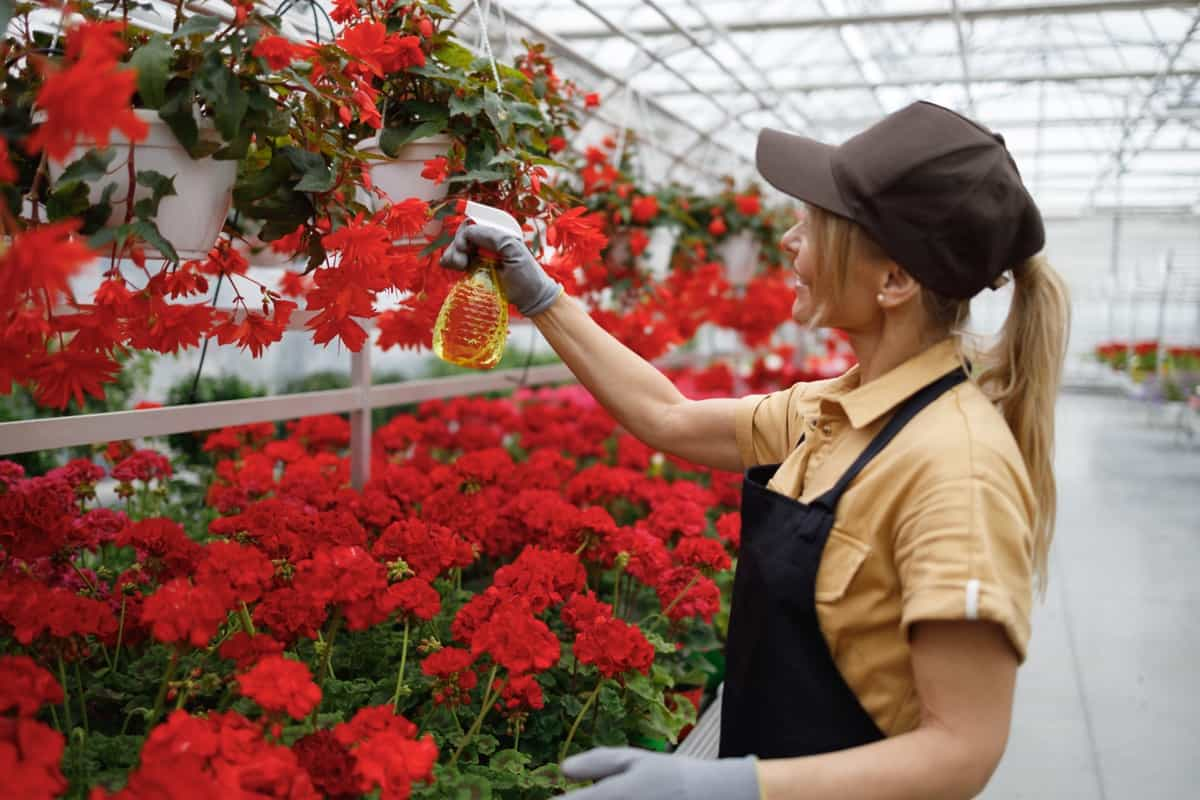
Common greenhouse pests include aphids, thrips, whiteflies, fungus gnats, shoreflies, spider mites, and diseases like powdery mildew and botrytis. Effective IPM techniques have cultural control, biological control, and biorational pesticides, reducing the need for chemical treatments. Regular monitoring and meticulous record-keeping are essential components of IPM, aiding in making informed decisions about pest control methods.
Greenhouse IPM: The Importance of Monitoring and Identification
Monitoring and identification are important in Integrated Pest Management (IPM) for greenhouse crops. To detect early infestations, it is recommended to use sticky trap cards and visual inspection. Different colored sticky cards and indicator plants can also monitor pests. Identifying pests accurately is essential for selecting the right control measures.
This guide provides information on common insect and mite pests of greenhouse crops, such as aphids, thrips, whiteflies, fungus gnats, mealybugs, shoreflies, spider mites, leafminers, and scales. By monitoring and identifying pests early, growers can take action to keep pests under control and minimize the use of pesticides.
Importance for IPM in Greenhouse Production
IPM is important for greenhouse production because it provides a sustainable and effective approach to managing pests and diseases. By using a combination of control methods, growers can reduce the use of pesticides and maintain healthy crops while minimizing the environmental impact. IPM involves monitoring, sampling, and record-keeping to find control options needed to keep pests below an economically damaging threshold. Pest management, not eradication, is the goal of IPM.
Common Pests and Diseases Affecting Greenhouse Crops
- Aphids, thrips, and whiteflies: These pests can be managed using biological control methods, such as releasing natural predators like ladybugs, lacewings, and parasitic wasps. Sticky traps and insect growth regulators can also be used.
- Fungus gnats and shore flies: These pests can be managed using cultural control methods such as keeping the greenhouse clean and dry, using yellow sticky traps, and using biological control methods such as nematodes and predatory mites.
- Spider mites: These pests can be managed using biological control methods such as predatory mites and insecticidal soaps. Cultural control methods such as maintaining high humidity levels can also be effective.
- Powdery mildew and botrytis: These diseases can be controlled through cultural practices, such as keeping the airflow and humidity levels just right, getting rid of infected plants, and using biorational fungicides.
- Tomato spotted wilt virus: This disease can be managed using cultural control methods such as removing infected plants and using biorational insecticides to control the thrips that vector the virus.
In case you missed it: Natural Pollination in Greenhouse Crops Using Bumblebees and Other Beneficial Insects
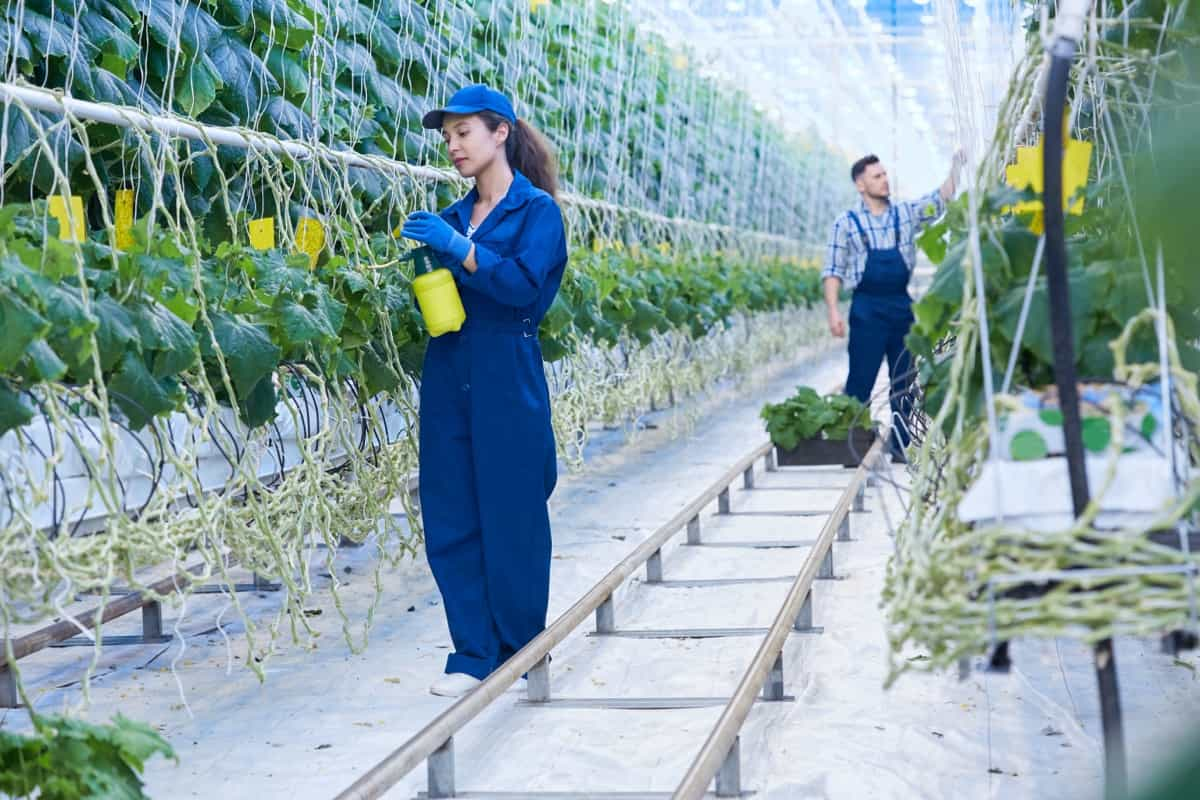
Biological Control Methods for Greenhouse Pests
Biological control is a method for using living organisms to control pests in greenhouse crops. This method is an important part of Integrated Pest Management (IPM) and can be combined with other control methods to reduce the use of pesticides. Biological control agents include predators, parasites, and pathogens that attack pests and reduce their populations.
- Predatory mites are one of the most commonly used biological control agents in greenhouse crops. These mites feed on pest mites, such as spider mites, and can be introduced into the greenhouse as a preventative measure or when pest populations are low. Other predatory insects, such as ladybugs and lacewings, can also control aphids, whiteflies, and other pests.
- Parasitic wasps are another biological control agent that can be used to control pests in greenhouse crops. These wasps lay eggs inside the bodies of pests, such as whiteflies and aphids, and the developing wasp larvae kill the pests. Parasitic wasps are often combined with other control methods, such as sticky traps and insecticides.
- Pathogens like bacteria and fungi, can also be used to control pests in greenhouse crops. For example, Bacillus thuringiensis bacterium produces a toxin that kills caterpillars and other pests. BT is applied as a spray or dust to control pests in greenhouse crops.
When using biological control agents, it is important to remember that they are living organisms and require specific conditions to be effective. For example, many predators and parasites perform best at moderate temperatures and humidities. In addition, biological control agents are often highly susceptible to pesticides, so it is important to choose pesticides with the shortest residual life and the highest specificity.
Cultural Control Methods for Greenhouse Pests
Cultural control methods are non-chemical methods of controlling pests in greenhouse crops. These methods involve changing the growing environment or cultural practices to reduce pest populations. Cultural control methods are an important part of Integrated Pest Management (IPM) and can be combined with other control methods to minimize the use of pesticides.
In case you missed it: Exploring the Potential of Tuber Crops in Integrated Farming Systems: Maximizing Yields and Profit
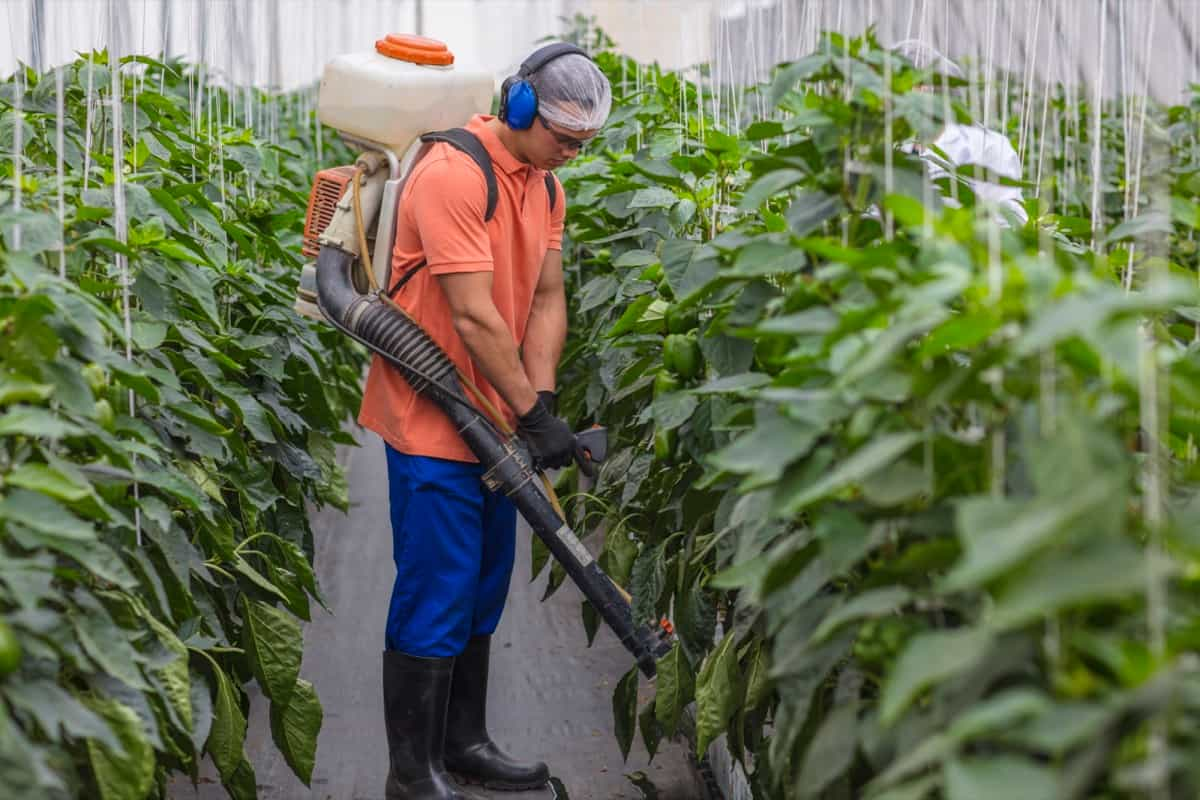
One cultural control method is sanitation. This involves removing plant debris, weeds, and other organic matter from the greenhouse to eliminate pest habitats. Sanitation help in reduce the spread of diseases and pests between crops. Another cultural control method is crop rotation. This involves rotating crops to different greenhouse areas to reduce pest populations. Crop rotation help in reduce the buildup of soil-borne diseases and pests.
Using resistant varieties of plants is another cultural control method. Resistant varieties are less susceptible to pests and diseases and can help reduce the need for pesticides. However, it is important to note that resistance is not immunity, and resistant varieties may still require some pest control measures. Screening is another cultural control method that physically excludes pests from the greenhouse. Insect screens can prevent the entry of lightweight, airborne insects like aphids, whiteflies, and thrips through doors, cooling pads, and ventilation units.
When to Use Chemical Control Methods in Greenhouse Production
Chemical control methods should be used in greenhouse production when other control methods have failed to keep pest populations below an economically damaging threshold. The best practices for their use include selecting pesticides with the shortest residual life and the highest specificity, rotating pesticides with different modes of action, and following label instructions for application rates and timing. It is also important to monitor for pesticide resistance and avoid using pesticides harmful to beneficial organisms.
Chemical Control Methods for Greenhouse Pests: A Last Resort
Chemical control methods involve using pesticides to control pests in greenhouse crops. While pesticides can effectively control pests, they should be used as a last resort and in combination with other control methods. Overusing pesticides can develop pesticide-resistant pests, harm beneficial organisms, and contaminate the environment. Examples of chemical control methods include insecticides, fungicides, and herbicides. Insecticides are used control insect pests, such as aphids, whiteflies, and spider mites.
Fungicides control fungal diseases, such as powdery mildew and botrytis. Herbicides are used to control weeds. When using pesticides, choosing the least toxic and most specific pesticide for the target pest is essential. For example, insecticidal soaps and oils are less harmful than synthetic insecticides and can effectively control pests like aphids and spider mites. Pesticides are applied according to label instructions and at the recommended rates. Rotating pesticides to reduce the risk of developing pesticide-resistant pests is also important.
In case you missed it: Ultimate Guide to Greenhouse Irrigation and Water Management
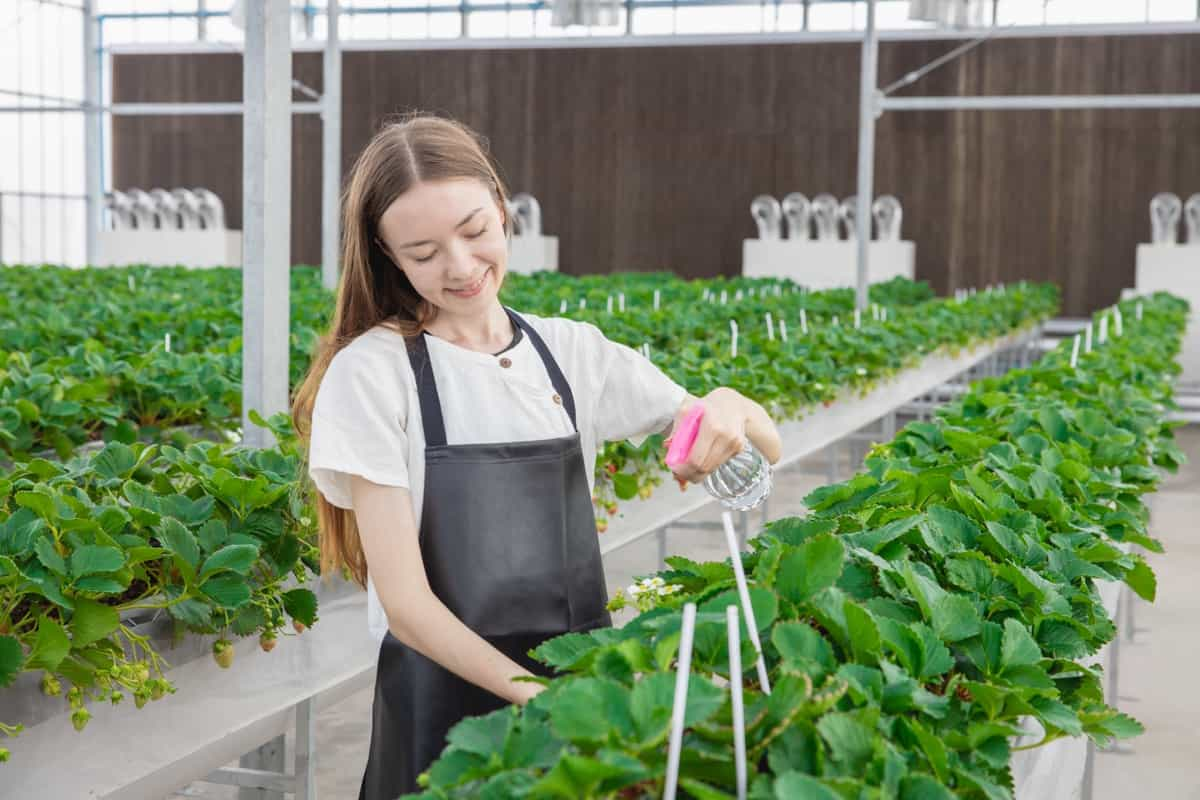
Types of Biorational Pesticides for Greenhouse Production
Biorational pesticides are a type of pesticide that are derived from natural sources and have low toxicity to non-target organisms. They include botanicals, microbial pesticides, and insect growth regulators. These pesticides are used in greenhouse production to control pests and minimize environmental and human health impacts.
IPM in Greenhouse Vegetables: Managing Pests for Optimal Crop Health
Greenhouse vegetables are susceptible to various pests, such as aphids, whiteflies, thrips, spider mites, leafminers, caterpillars, and nematodes. These pests can reduce crop yield and quality and transmit viruses and bacteria.
- Monitor pest populations regularly using sticky traps, scouting, and sampling.
- Identify the pest species and their natural enemies using a magnifying lens or a microscope.
- Use cultural practices to prevent pest outbreaks, such as sanitation, crop rotation, resistant varieties, optimal irrigation and fertilization, and proper ventilation.
- Use biological control agents to suppress pest populations, such as predatory mites, parasitoids, entomopathogenic fungi and bacteria, and insecticidal plants.
- Use physical methods to exclude or remove pests, such as screens, nets, vacuuming, pruning, and roguing.
- Use selective and reduced-risk pesticides only when necessary and according to label instructions. Avoid broad-spectrum pesticides that can harm beneficial organisms and cause pest resistance.
IPM in Greenhouse Flowers and Ornamentals: Preserving Aesthetic and Environmental Quality
Greenhouse flowers and ornamentals are grown for their beauty and value. However, they can also be attacked by pests such as aphids, whiteflies, thrips, spider mites, mealybugs, scale insects, fungus gnats, and shoreflies. These pests can cause cosmetic damage, reduce plant vigor and longevity, and affect marketability.
- Monitor pest populations regularly using sticky traps, scouting, and sampling.
- Identify the pest species and their natural enemies using a magnifying lens or a microscope.
- Use cultural practices to prevent pest outbreaks, such as sanitation, crop rotation, resistant varieties, optimal irrigation and fertilization, and proper ventilation.
- Use biological control agents to suppress pest populations, such as predatory mites, parasitoids, entomopathogenic fungi and bacteria, and insecticidal plants.
- Use physical methods to exclude or remove pests, such as screens, nets, vacuuming, pruning, and roguing.
- Use selective and reduced-risk pesticides only when necessary and according to label instructions. Avoid broad-spectrum pesticides that can harm beneficial organisms and cause pest resistance.
IPM in Greenhouse Flowers and Ornamentals: Preserving Aesthetic and Environmental Quality
Integrated Pest Management (IPM) is a structured approach to preserving the beauty and environmental quality of greenhouse flowers and ornamental plants. It involves pest identification, regular monitoring, biological control, cultural practices, chemical control as a last resort, record keeping, education and training, and customization.
Pest identification involves identifying pests and diseases that affect flowers and ornamentals, such as aphids, whiteflies, and powdery mildew. Regular monitoring helps detect pest outbreaks early, and thresholds are established for each pest. Biological control involves using beneficial insects to control pests naturally, reducing the chemical pesticides.
In case you missed it: Homemade Soap-Based Insecticides for Garden Pest Control
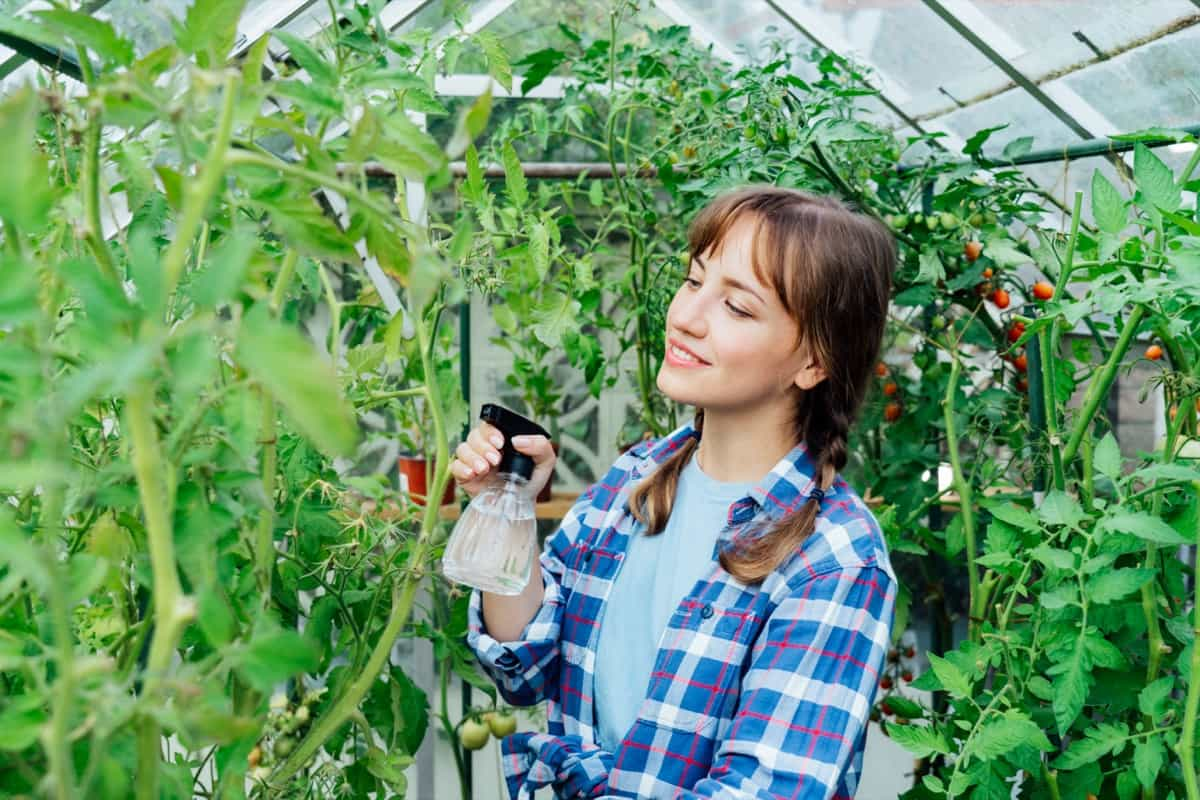
Cultural practices, such as pruning, proper spacing and maintaining optimal humidity levels, can deter pests and diseases. Chemical control is used sparingly based on their efficacy, specificity, and minimal impact on non-target organisms. IPM practices can lead to economic and environmental benefits, as they reduce the use of chemical pesticides and minimize pesticide residues on ornamental plants.
IPM in Greenhouse Herbal Crops: Pest Management of Herbs in Controlled Environment
Integrated pest management (IPM) is a comprehensive approach to control pests in greenhouse herbal crops, combining cultural, biological, physical, and chemical methods. It aims to minimize environmental and health risks associated with pesticide use, improve crop quality and yield, reduce pest resistance, enhance biodiversity, lower production costs, and increase consumer and worker safety.
To implement IPM, growers need to monitor pests, set action thresholds, choose appropriate IPM tactics, and evaluate the effectiveness and impact of IPM actions. This holistic approach can improve crop quality, reduce pest resistance, enhance biodiversity, and reduce production costs.
Conclusion
Integrated Pest Management (IPM) is the cornerstone of sustainable greenhouse crop production. By integrating diverse pest management strategies, emphasizing prevention, and minimizing reliance on chemical pesticides, IPM ensures healthier crops, reduced environmental impact, and economic efficiency.
- Types of Pesticides Used in Agriculture: A Beginner’s Guide
- Economical Aquaculture: A Guide to Low-Budget Fish Farming
- 15 Common Planting Errors That Can Doom Your Fruit Trees
- How to Make Houseplants Bushy: Effective Tips and Ideas
- Innovative Strategies for Boosting Coconut Pollination and Yield
- Pollination Strategies for Maximum Pumpkin Yield
- The Complete Guide to Chicken Fattening: Strategies for Maximum Growth
- Natural Solutions for Tulip Problems: 100% Effective Remedies for Leaf and Bulb-Related Issues
- Revolutionizing Citrus Preservation: Towards a Healthier, Greener Future
- Natural Solutions for Peony Leaf and Flower Problems: 100% Effective Remedies
- Maximizing Profits with Avocado Contract Farming in India: A Comprehensive Guide
- Natural Solutions for Hydrangea Problems: 100% Effective Remedies for Leaf and Flowers
- The Ultimate Guide to Choosing the Perfect Foliage Friend: Bringing Life Indoors
- From Sunlight to Sustainability: 15 Ways to Use Solar Technology in Agriculture
- The Ultimate Guide to Dong Tao Chicken: Exploring from History to Raising
- The Eco-Friendly Makeover: How to Convert Your Unused Swimming Pool into a Fish Pond
- Mastering the Art of Delaware Chicken Farming: Essentials for Healthy Backyard Flocks
- 20 Best Homemade Fertilizers for Money Plant: DIY Recipes and Application Methods
- How to Craft a Comprehensive Free-Range Chicken Farming Business Plan
- Brighten Your Flock: Raising Easter Egger Chickens for Beauty and Bounty
- How to Optimize Your Poultry Egg Farm Business Plan with These Strategies
- Subsidy for Spirulina Cultivation: How Indian Government Schemes Encouraging Spirulina Farmers
- Ultimate Guide to Raising Dominique Chickens: Breeding, Feeding, Egg-Production, and Care
- Mastering the Art of Raising Jersey Giant Chickens: Care, Feeding, and More
- Ultimate Guide to Raising Legbar Chickens: Breeding, Farming Practices, Diet, Egg-Production
- How to Raise Welsummer Chickens: A Comprehensive Guide for Beginners
- How to Protect Indoor Plants in Winter: A Comprehensive Guide
- Ultimate Guide to Grow Bag Gardening: Tips, Tricks, and Planting Ideas for Urban Gardeners
- Guide to Lotus Cultivation: How to Propagate, Plant, Grow, Care, Cost, and Profit
- Agriculture Drone Subsidy Scheme: Government Kisan Subsidy, License, and How to Apply Online
- Ultimate Guide to Raising Araucana Chickens: Breed Profile, Farming Economics, Diet, and Care
- Bringing Hydroponics to Classroom: Importance, Benefits of Learning for School Students
- Ultimate Guide to Raising Polish Chickens: Breed Profile, Farming Economics, Diet, and Care
- Ultimate Guide to Raising Australorp Chickens: Profile, Farming Economics, Egg Production, Diet, and Care
- Silkie Chicken Farming: Raising Practices, Varieties, Egg Production, Diet, and Care
- Sussex Chicken Farming: Raising Practices, Varieties, Egg Production, Diet and Care